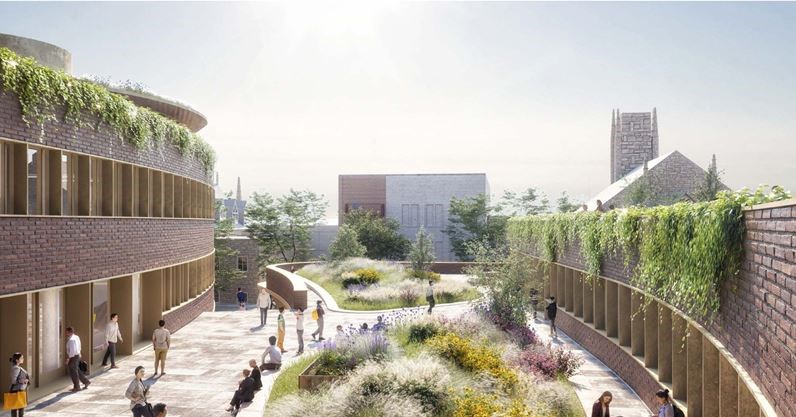Developer says hundreds of new residential units would be part of Baker project
When it is built in the next decade or so, the Baker District development will feature nearly 300 new residential units and will aim to be environmentally friendly.
First announced by the City of Guelph in mid-July, Windmill Developments, the city’s partner for the redevelopment of Baker, has released details on its proposal for the area.
According to a release from the Ottawa-based firm, and subsequently published by Canadian Architect, the development will include two residential buildings, one on the north and the other on the south side of a new street that would be constructed as part of the project. Windmill states that the new buildings would contain approximately 275 residential units.
In its release, and also announced earlier this month in the City of Guelph’s news release on the development, the Baker District will be developed as a One Planet Living community.
Created by the U.K.-based Bioregional, One Planet Living is a list of principles that developers can use, such as zero carbon energy, zero waste, encouraging walking communities and using materials from sustainable sources.
Martin Jewitt, a program manager for portfolio development for the city, tells the Mercury Tribune in an email those proposed residential buildings are already permitted on the Baker land under the Downtown Secondary Plan.
Jewitt adds that Windmill “will need to submit an urban design master plan to the city and in consultation with the community.”
“Any amendments required to support the development application (i.e. official plan amendment or zoning amendment) would require public consultation.”
According to a presentation given to city council by staff when Windmill was announced as the city’s partner on the project, the two will be in negotiations until at least next year and as late as 2020. Out of that will come a detailed business case for the redevelopment of the property, which will then be brought back to council for consideration.
During that time, there will also be stakeholder engagement for the project, which in turn could alter what the project inevitably looks like.
Assuming council approves the business case, council and regulatory approvals, site preparations and detailed design work would last through until 2022. From there, it is expected construction would start in 2023 or 2024.
It is estimated that the preconstruction work could cost as much as $30 million, although the staff presentation does not break down how much of that would be paid for by the city or by the developer.
The construction phase would be the most costly, coming in as high as $265 million. The city would be responsible for as much as $90 million of that, with those funds going toward the new library, the public plaza and parking.
In February, Guelph councillors supported the business case for the new library, which would anchor the Baker development. The 88,000-sq.-ft library would replace the current main Norfolk branch, which is about a third of the size.
At that same meeting, councillors unanimously approved that the proceeds of the sale of the Norfolk property go toward the costs of the new library.
As for parking, Jewitt says that, under the request for proposals (RFP) issued by the city for the project, the city is looking to replace the existing parking on the Baker lot one-to-one in the new development.
“While the current Parking Master Plan contemplates 500 public parking spaces being provided at Baker District, the city’s overarching goal is to maximize the amount of public parking that can be provided on-site without compromising the viability of the overall development,” the RFP reads.
Jewitt adds that this public parking would be “separate and discrete” from any parking that would be required for the proposed residential development, or possible institutional and commercial properties, on the site.
However, Jewitt says parking spaces could be shared.
“That being said, and as part of the business case, the city is keen to explore opportunities with the development partner in which we can leverage opportunities to share parking spaces within the development such that we can achieve the most new parking at the least cost,” he says.

